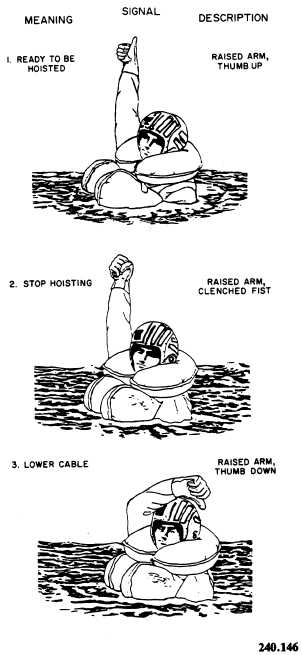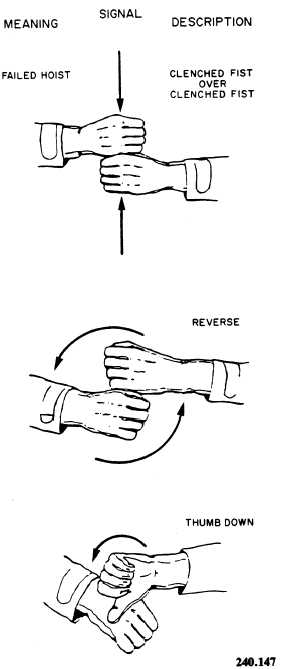transmitting capability. Because of this line-
of-sight imposition, you should try to transmit
from the highest point in the area. All sur-
vival radios should be held at least 14 inches
above the surface for best results. Signal range
increases proportionally with the altitude of
the search aircraft provided the line of sight
i s n o t o b s t r u c t e d . D e g r a d a t i o n c a n b e e x-
pected when the radio set is operated in bad
weather and inside areas of rugged terrain.
The radiated ranges given are obtained when
the half-wave antenna is used; the range is
typically one-third less when the quarter-wave
antenna is used.
Hand Signals
Hand signals are used by all helicopter
c r e w m e n .
A l l a i r c r e w m e m b e r s m u s t be
thoroughly familiar with the rescue hand signals
to ensure the success of the rescue attempt. All
aircrewmen must memorize the hand signals
shown in figures 5-37, 5-38, and 5-39.
Figure 5-38.—Signals to the hoist operator after hookup to
Figure 5-39.—Signals from the hoist operator after hookup
the rescue hook.
to the rescue hook.
5-29





